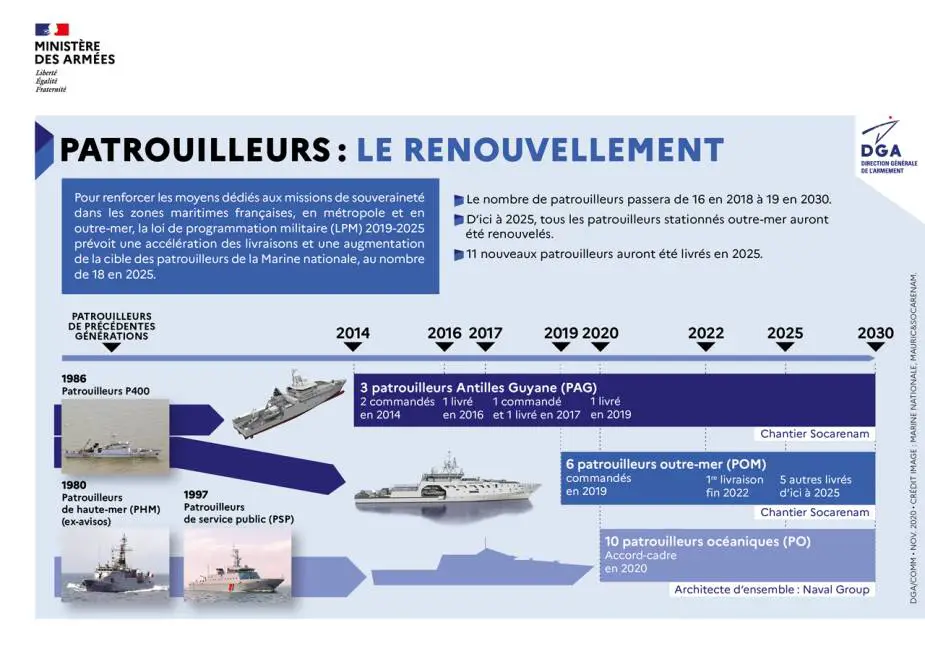The French defense procurement agency (DGA, Direction Générale de l’Armement) notified a framework agreement relating to French Navy oceanic patrol vessel (PO, patrouilleurs océaniques) program on Oct. 23.
Follow Navy Recognition on Google News at this link
 Oceanic patrol vessels will carry out deterrence support, autonomous situation assessment in areas of sovereignty or interest, escort of valuable or vulnerable units, evacuation of nationals, sovereignty and protection of national interests in maritime approaches and state action at sea (Picture source: French DoD and DGA)
Oceanic patrol vessels will carry out deterrence support, autonomous situation assessment in areas of sovereignty or interest, escort of valuable or vulnerable units, evacuation of nationals, sovereignty and protection of national interests in maritime approaches and state action at sea (Picture source: French DoD and DGA)
In a context marked by the increase in maritime traffic and the increase in threats at sea, oceanic patrol vessels will carry out deterrence support, autonomous situation assessment in areas of sovereignty or interest, escort of valuable or vulnerable units, evacuation of nationals, sovereignty and protection of national interests in maritime approaches and state action at sea.
The objective of the program is to have multi-mission combat boats, with a better situational awareness capacity than the patrollers currently in service (combat direction system, radar, sonar, tactical data links, infrared sensor , helicopter, drone, new generation drome), a self-defense capability against asymmetric threats and efficient communication systems. The program also incorporates an overall energy efficiency target.
The oceanic patrol program will allow the complete renewal of the patrol boats stationed in metropolitan France, namely the high seas patrol boats (PHM, Patrouilleurs de Haute Mer) based in Brest and Toulon, and the public service patrol boats (PSP, patrouilleurs de service public) based in Cherbourg. Oceanic patrol vessels will resume all of their territorial defense and maritime security missions, with an extension of their capabilities, in particular the ability to accommodate a drone or a helicopter.
The chosen acquisition strategy is based on a framework agreement made up of several subsequent contracts. Considering the nature of the missions which will be entrusted to the POs, it aims to make the most of national industrial skills in the fields of development, construction and naval equipment. The program will consist of two stages: a design / development phase, which has just been launched, then a production phase.
The first contract, awarded to Naval Group, concerns a value analysis as well as the design activities that will be carried out at objective cost.



